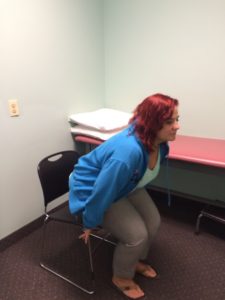1. Muscle Strain– There are different degrees of muscle strains from a minor overstretching injury to a tear. To avoid muscle strains, make sure you warm up appropriately and do not lift more weight than you can handle.
2. Tendonitis-is caused by a repetitive strain to the tendon of the muscle. If you overwork a muscle, you can develop tendonitis.
3. Bursitis– is inflammation to the bursa. A Bursa is a fluid filled sac that provides decrease friction and helps to give a fluid movement to the joint. Avoid doing the same exercises all the time; change it up to avoid overuse of one particular area.
4. Back injury– due to placing increase stress on your back muscles with exercises. Avoid forward bent over postures at the gym. Bend with your knees and tighten your abdominal muscles during exercises. This will help decrease the likelihood of a back injury.
5. Shoulder impingement injury– can occur when you overuse the rotator cuff muscles. The rotator cuff muscle can rub against the top part of the shoulder blade, producing pain. Avoid overhead weighted exercises.
If you experience pain while you are working out, you should stop and apply ice. If the pain persists for more than 3 days, contact your physician or your local physical therapist at Harbor Physical Therapy.


